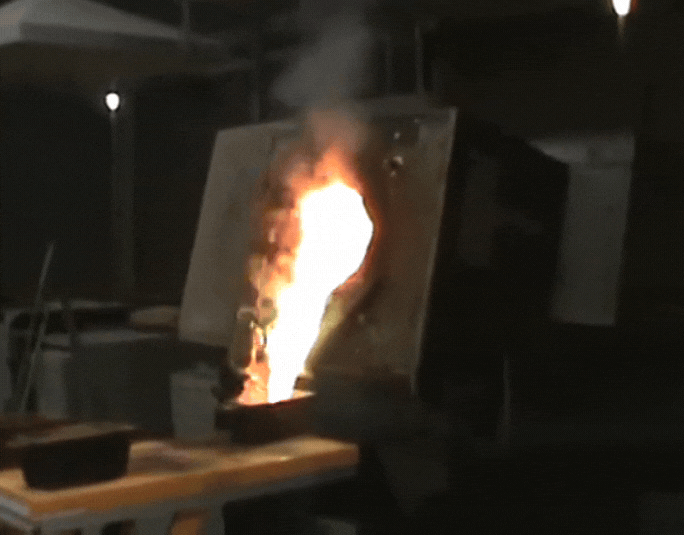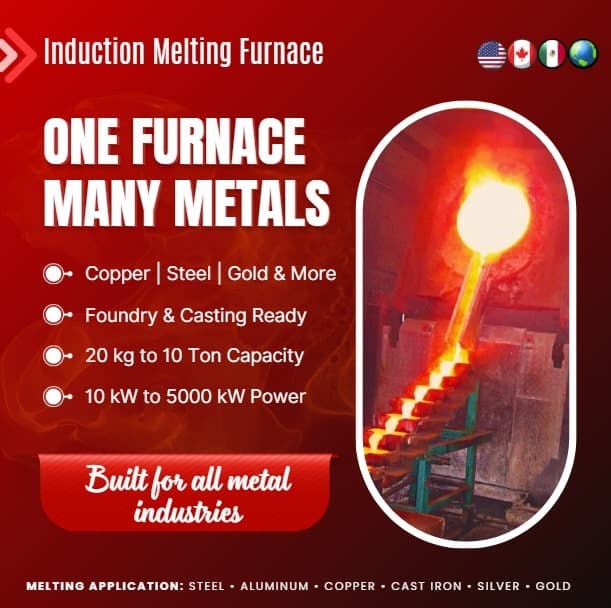We are advisors and consultants to a wide range of industries—including Foundries, Steel Plants, Mining operations, Metal Mills, Universities, Military
institutions, Aerospace, and metal processing industry.
Our mission is to help clients reduce energy consumption and identify the most efficient induction furnace solutions ailored to their specific perational needs




Silicon plays a foundational role in modern technologies, from solar photovoltaics to microelectronics. As demand for high-purity silicon continues to rise, so does the need for advanced melting methods that ensure material quality, energy efficiency, and process reliability. An induction furnace for silicon melting offers a non-contact, controlled heating environment that meets the stringent requirements of solar-grade and electronic-grade silicon production. This article explores how induction furnace technology is transforming the silicon melting process, the types of systems available, their key benefits, and application insights tailored for industries that rely on ultra-clean material processing.
The unique thermal and chemical properties of silicon make it a challenging material to melt using conventional heating methods. Induction heating provides direct energy transfer to the silicon charge through electromagnetic fields, eliminating the need for combustion-based heating or resistance elements. This results in a cleaner process with minimal contamination risk—essential for high-purity silicon applications. Furthermore, induction furnaces offer real-time temperature control, fast ramp-up rates, and energy efficiency. A well-designed silicon melting induction furnace enables both batch and continuous melting operations across industrial and research environments.
![]()
Silicon has a high melting point of approximately 1414°C, requiring a furnace system that can sustain stable high-temperature operation. Its thermal conductivity and electrical resistivity also influence the design of the induction coil and power supply. Additionally, silicon’s brittleness and tendency to oxidize at elevated temperatures demand protective atmospheres (e.g., inert gases or vacuum) and crucibles that do not introduce impurities. These considerations shape the specifications of a silicon melting furnace for precision thermal processing.
Using an induction melting furnace for silicon offers a range of performance and process benefits:
Induction furnace technology supports a broad spectrum of silicon melting applications—ranging from ultra-pure semiconductor processing to high-volume solar ingot production and experimental material science. Key application areas include:
Configuring an induction furnace for silicon melting requires careful consideration of technical variables that directly impact process quality, energy efficiency, and material purity. Silicon’s high melting point, reactivity at elevated temperatures, and susceptibility to contamination demand that furnace systems be precisely engineered to match the scale, environment, and production objectives of each application. The key configuration options to consider when designing a silicon induction furnace are outlined below.
The table below presents a breakdown of essential configuration features and how they align with silicon processing requirements:
Configuration Feature | Description | Purpose in Silicon Melting |
Crucible Type | Graphite or Silicon Carbide Crucible | Maintains material integrity and prevents contamination |
Power Supply & Coil Design | Medium- or high-frequency sources with optimized coil geometry | Ensures efficient electromagnetic coupling and controlled melting |
Capacity Range | From 20 kg to 5 ton Capacity | Scales the system to match throughput and facility size |
Cooling System | Water-cooled for heavy-duty systems; | Prevents coil overheating and maintains system longevity |
Control Interface | Digital panels, PLCs, and smart thermal sensors | Enables real-time monitoring, data logging, and automation |
Table 2. Key Configuration Options for Silicon Induction Furnaces.
An induction furnace for silicon melting operates based on electromagnetic principles that induce eddy currents within the silicon charge, generating heat through Joule losses. This non-contact heating mechanism is critical for maintaining material purity—essential in semiconductor and solar-grade silicon production.
The visual below illustrates the internal layout of a typical coreless induction melting furnace used in silicon processing. It highlights the key functional components including the crucible, induction coil, power supply interface, and charging system.
A copper coil, typically water-cooled, surrounds the crucible and is energized with alternating current. The magnetic field penetrates the silicon material, initiating internal current loops.
Made from high-purity graphite, quartz, or ceramic, the crucible holds the silicon. For ultra-high purity, cold crucible systems eliminate contamination risks.
Medium or high-frequency power sources are matched to silicon’s electrical properties for optimal efficiency.
Incorporates thermocouples, HMI and PLC controllers, and digital interfaces to regulate melting temperatures with high precision.
Despite the advantages of the induction silicon melting furnace, certain challenges remain in both material behavior and system efficiency:
Continuous high-temperature operation can degrade crucible linings, introducing impurities in solar-grade silicon.
Maintaining inert atmospheres or vacuum environments is essential to prevent oxidation of molten silicon.
Although efficient, silicon’s high melting point demands robust power systems and cooling infrastructure.
Electromagnetic coils undergo mechanical and thermal fatigue, especially in industrial-scale setups.
Looking ahead, trends in silicon melting induction furnace technology include:
The induction furnace for silicon melting stands as a cornerstone of modern material processing for solar and semiconductor industries. By offering unmatched purity, control, and efficiency, it enables the high standards required for next-generation technologies. Whether your focus is on solar-grade ingot casting, semiconductor-grade purity, or research applications, an induction silicon melting furnace provides the control and scalability your operation demands. Contact Electroheat Induction to learn more about custom-engineered silicon melting furnace systems tailored to your production goals.